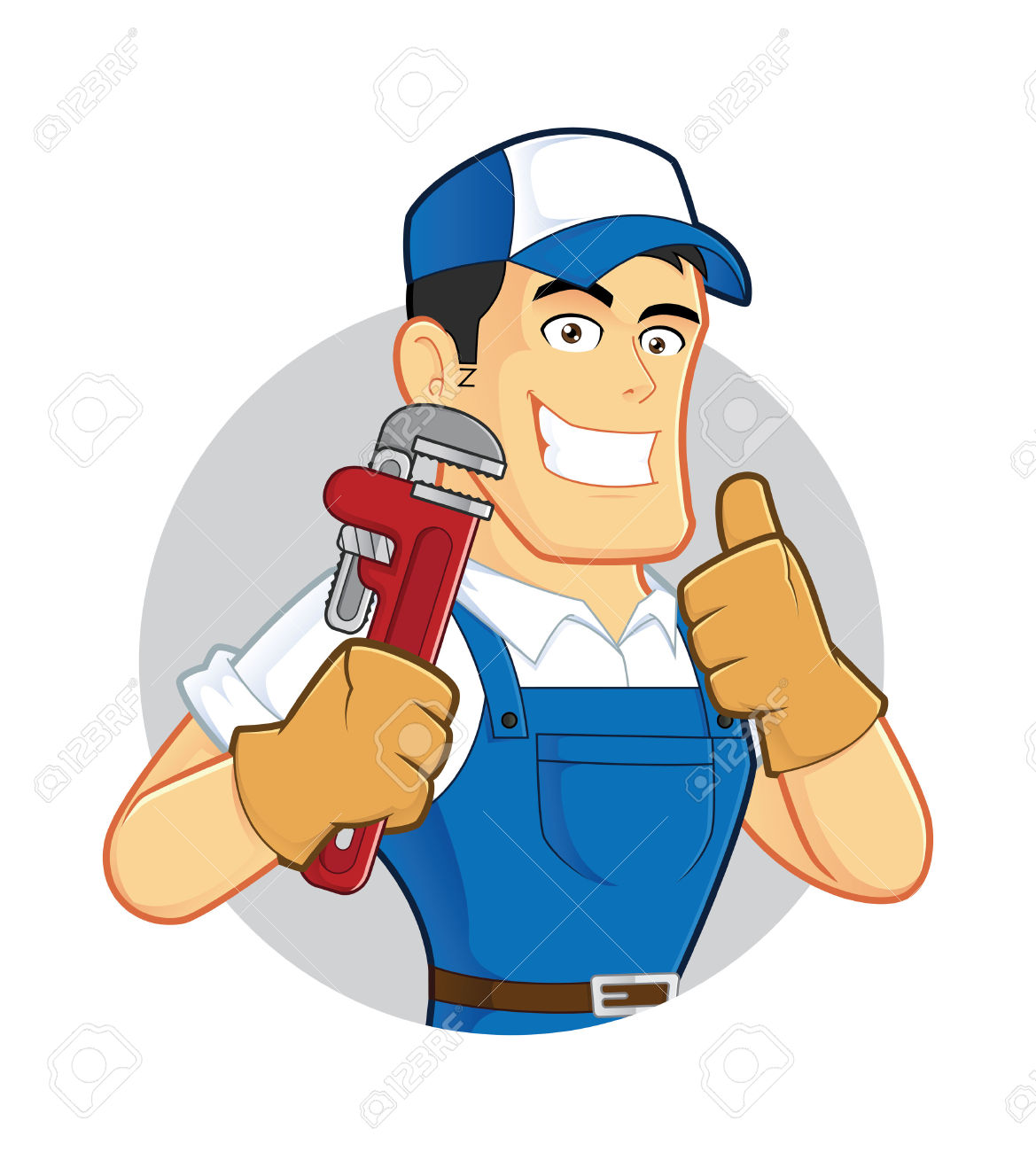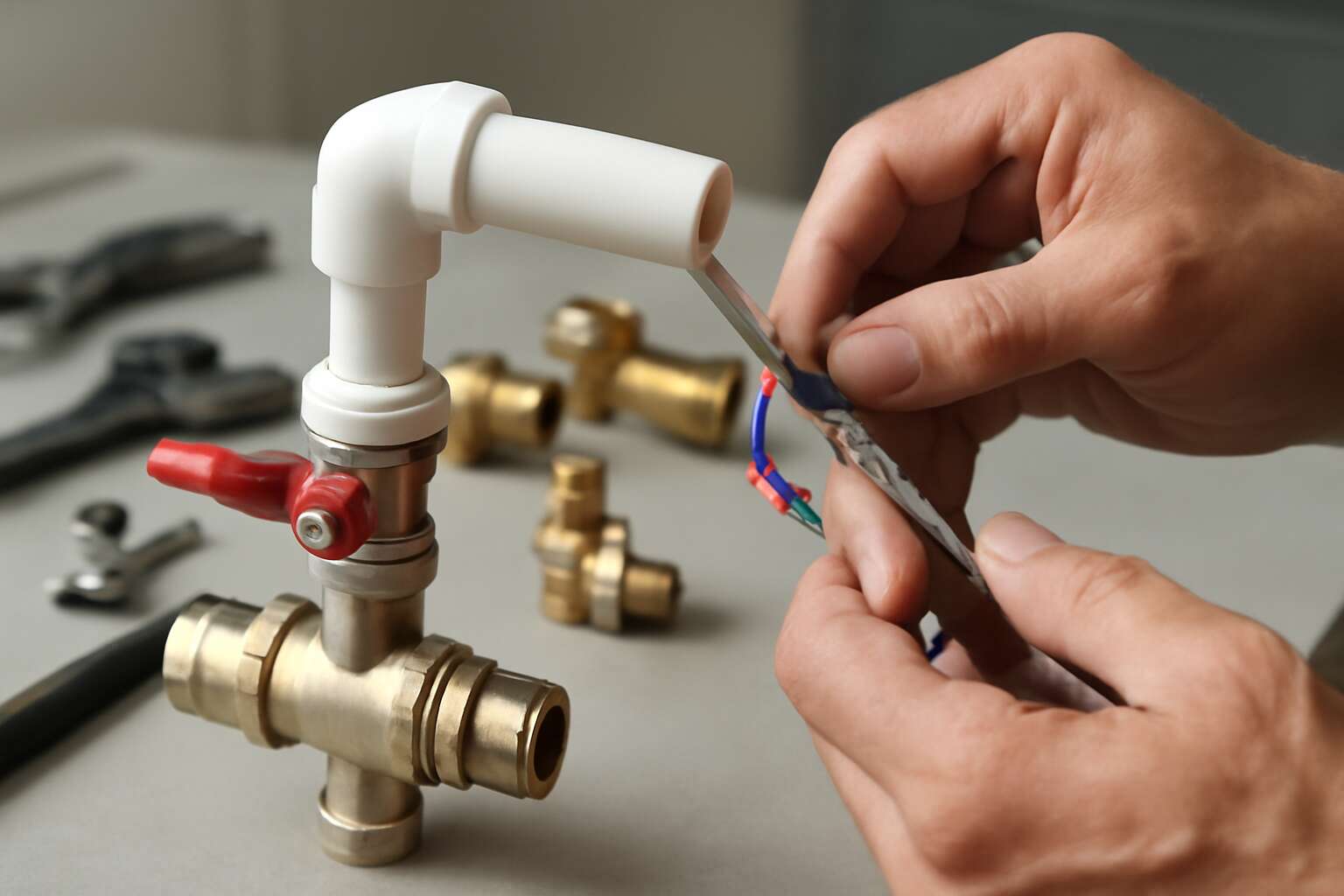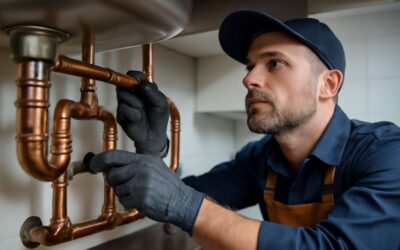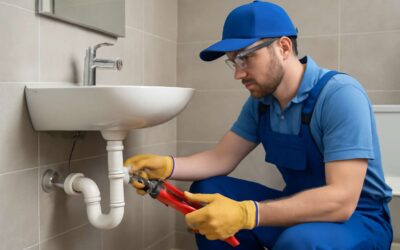Understanding Plumber Wire
Definition of Plumber Wire – What is plumber wire and its primary functions
In the intricate dance of plumbing, where precision and reliability intertwine, plumber wire emerges as an unsung hero. This seemingly humble component is vital for ensuring seamless connections and maintaining the integrity of plumbing systems. Often overlooked, plumber wire acts as the delicate thread binding together complex networks of pipes and fixtures, facilitating both repair and installation processes with finesse.
What exactly is plumber wire? Essentially, it’s a specialised type of flexible, corrosion-resistant wire designed to navigate tight spaces and secure fittings. Its primary functions include guiding pipes through confined areas, providing grounding in electrical components, and assisting in the safe anchoring of fixtures. The versatility of plumber wire makes it a staple in every professional’s toolkit, especially when working in challenging environments.
- Guiding pipes through narrow, hard-to-reach spaces
- Securing fittings to prevent leaks or dislodgement
- Providing electrical grounding for safety and compliance
Envision plumber wire as a whisper of resilience within your plumbing system, silently upholding the integrity of your work with every twist and turn. Its robustness and adaptability are what make it an indispensable element—transforming routine repairs into works of art that stand the test of time. Truly, plumber wire is more than just a component; it’s the invisible backbone of plumbing excellence.
Types of Plumber Wire – Different types available in the market
Understanding the different types of plumber wire is crucial for ensuring you select the right product for each job. The market offers a variety of options, each tailored to specific needs within plumbing and electrical work. The most common types include insulated and non-insulated plumber wire, designed for both safety and flexibility. These variations allow professionals to adapt to tight spaces and complex pipe configurations with confidence.
For specialised tasks, you’ll find plumber wire made from corrosion-resistant materials such as stainless steel or flexible copper. These materials enhance durability, especially in environments prone to moisture or chemical exposure. When selecting plumber wire, consider the gauge and coating—both influence the wire’s strength and lifespan.
To simplify choices, many professionals rely on a few key types:
- Flexible copper plumber wire — ideal for guiding pipes through confined spaces.
- Stainless steel plumber wire — perfect for corrosion-prone environments.
- Insulated plumber wire — used where electrical grounding and safety are priorities.
Choosing the right plumber wire type can make all the difference in achieving a seamless, long-lasting plumbing setup. Each variation offers unique benefits—knowing which to use ensures your work remains reliable and professional every time!
Materials Used in Plumber Wire – Common materials and their advantages
Understanding the materials used in plumber wire reveals a world of durability and versatility that transforms everyday plumbing tasks into feats of engineering finesse. Commonly, plumber wire is crafted from materials such as copper, stainless steel, and aluminium—each selected for their unique properties that withstand the rigours of moisture, corrosion, and mechanical stress.
Copper, renowned for its excellent conductivity and flexibility, is a favourite among professionals for guiding pipes through intricate, confined spaces. Meanwhile, stainless steel offers unmatched resilience in environments exposed to chemicals or high humidity, making it ideal for long-lasting installations.
For those seeking an optimal balance of strength and corrosion resistance, aluminium plumber wire presents a lightweight yet durable solution. The choice of material directly impacts the longevity and performance of your plumbing system.
- Corrosion-resistant materials like stainless steel or copper extend the lifespan of the wire.
- Flexible materials facilitate easier installation in complex pipe configurations.
With each material, the advantages align with specific project needs, empowering professionals to craft plumbing that stands the test of time.
Applications of Plumber Wire
Pipe Installation and Repair – How plumber wire aids in pipe installation
Plumber wire plays a vital role in pipe installation and repair, offering a reliable solution for guiding and positioning pipes with precision. Its flexibility and strength help plumbers navigate tight spaces, ensuring secure connections and reducing the risk of leaks. In complex systems, plumber wire acts as a backbone, maintaining alignment during assembly and making adjustments seamless.
During repairs or new installations, plumber wire can be used to pull pipes through walls or underground channels. Its durable nature allows it to withstand the tension involved in pulling heavy or awkward pipes into place. This makes it indispensable in scenarios where traditional methods might fail or be too time-consuming.
In fact, many professionals prefer plumber wire for its versatility. It can be cut to length easily, and its lightweight design means easier handling. Whether threading through existing conduits or helping with complex pipe layouts, plumber wire ensures the task is done efficiently and correctly. Its application is broad, from simple repairs to intricate plumbing systems, proving that plumber wire remains an essential tool for every plumber’s toolkit.
Clearing Clogs and Blockages – Using plumber wire for effective clog removal
Clogged drains and stubborn blockages can transform a simple plumbing task into a relentless battle. That’s where the humble yet mighty plumber wire emerges as an unsung hero, wielding its flexibility and strength to clear the path for free-flowing water. Imagine threading a silver serpent through a labyrinth of pipes, seeking out obstructions with precision and grace. This tool’s ability to navigate tight corners and narrow conduits makes it indispensable for tackling clogs deep within the system.
Using plumber wire, professionals can dislodge debris, hair, grease, or mineral build-up that causes slow drains or complete blockages. Its durability allows it to withstand the tension involved in pulling out stubborn obstructions, often avoiding the need for invasive excavation or chemical treatments. For particularly tenacious blockages, a simple twist of the plumber wire can turn a frustrating clog into a resolved concern.
In essence, plumber wire isn’t just a tool—it’s a conduit for restoring harmony within a plumbing system, ensuring pipes stay clear and functional.
Securing and Supporting Pipes – Methods for securing pipes with plumber wire
Securing and supporting pipes is a crucial aspect of maintaining a resilient plumbing network, and plumber wire plays a pivotal role in this process. Its flexibility and strength allow for precise adjustments, ensuring pipes remain firmly in place while accommodating thermal expansion and contraction. Properly secured pipes prevent unnecessary movement that could lead to joint stress or leaks—issues that often escalate into costly repairs.
Using plumber wire, professionals can create reliable support systems within tight spaces, where conventional clamps or brackets may not fit. For instance, wrapping plumber wire around pipes and anchoring it to structural elements can provide the necessary stability, especially in complex installations. This method not only reinforces the pipe’s position but also allows for easy adjustments during the fitting process. In some cases, a simple loop of plumber wire can serve as an effective temporary support, offering flexibility without sacrificing durability.

Choosing the Right Plumber Wire
Factors to Consider – Size, flexibility, material, and corrosion resistance
Choosing the right plumber wire involves more than just picking what looks sturdy; it’s about understanding the delicate balance between size, flexibility, material, and corrosion resistance. A wire that’s too thick may be unwieldy, while one that’s too thin might lack the strength needed for secure pipe support. Flexibility is equally vital, allowing the plumber wire to navigate tight spaces and complex piping configurations with ease, reducing potential damage or unnecessary tension.
Material selection plays a pivotal role in durability and longevity. Copper, for example, offers excellent corrosion resistance and conductivity, making it a popular choice among professionals. Meanwhile, stainless steel plumber wire provides unmatched strength and resilience in challenging environments.
When choosing plumber wire, consider these critical factors to ensure optimal performance and longevity. After all, a well-chosen wire not only simplifies installation but also safeguards the integrity of your plumbing system for years to come.
Popular Brands and Quality Indicators – Reputable brands and what to look for in quality
Choosing the right plumber wire can make all the difference in your plumbing projects. Reputable brands stand out because of their consistent quality and reliable performance. Look for trusted names like Ridgid, Knipex, or Milwaukee, which are well-regarded in the industry for their durability and craftsmanship. These brands often offer a range of sizes and materials tailored to various plumbing needs, ensuring you find the perfect match for your specific application.
Quality indicators are straightforward but essential. A good plumber wire should have a smooth finish, with no rough edges or visible flaws. Flexibility is another vital trait—wire that bends easily without breaking helps navigate tight spaces and complex pipe configurations. Additionally, a high-quality wire often features corrosion-resistant coatings or materials, such as stainless steel or copper, which extend its lifespan and maintain performance under challenging conditions.
When evaluating options, consider these key features:
- Corrosion resistance for longevity.
- Appropriate size for the task.
- High flexibility for ease of use.
Opting for a trusted brand with clear quality indicators ensures your plumber wire will perform reliably, reducing costly repairs and simplifying installation. It’s an investment that pays off through years of dependable service in the field.
How to Use Plumber Wire Effectively
Tools Needed – Additional tools required for installation or repair
Mastering the effective use of plumber wire requires more than just grasping its basic function; it demands an understanding of the precise tools that complement its versatility. Properly wielded, plumber wire can be the difference between a seamless repair and a frustrating ordeal. To optimise its potential, gather essential tools such as a sturdy pair of pliers, a tape measure, and a set of gloves to ensure safety and precision. Additionally, a drain auger or a snake can be invaluable when tackling stubborn clogs, working hand-in-hand with plumber wire to clear blockages efficiently.
When preparing for installation or repair, consider the following: selecting the correct size of plumber wire tailored to your pipe dimensions and ensuring the wire’s flexibility matches the complexity of the route. In some cases, additional tools like a lubricant spray or a cutting tool may be necessary to facilitate smoother insertion or trimming. The right combination of plumber wire and auxiliary tools can transform a daunting task into a straightforward process, saving time and reducing the risk of damage. Remember, patience and the right equipment are key to unlocking the full potential of plumber wire in plumbing repairs.
Step-by-Step Guide – Proper techniques for handling plumber wire
Mastering the art of using plumber wire effectively can turn a daunting plumbing task into an almost magical feat. The secret lies in handling the wire with finesse and precision, ensuring it weaves seamlessly through twists and turns within pipes. Begin by selecting the right size of plumber wire, tailored to the diameter of your pipe, and inspect its flexibility—this is crucial for navigating complex routes without causing damage.
Next, gently insert the plumber wire into the pipe, guiding it with slow, steady movements to avoid kinks or snags. If resistance is encountered, a small amount of lubricant spray can ease the process, helping the wire glide smoothly past stubborn obstructions. When you reach a clog or blockage, rotate the wire carefully to break up the debris, then pull it out slowly. For added control, consider using a set of sturdy pliers to hold and manipulate the wire during delicate manoeuvres.
- Insert the plumber wire slowly into the pipe, ensuring minimal force.
- Use gentle rotations to navigate bends and reach the obstruction.
- If resistance persists, apply a small amount of lubricant spray to facilitate movement.
- Once the clog is broken up or loosened, carefully extract the wire, bringing debris with it.
With patience and the right handling techniques, plumber wire can become a reliable companion in your plumbing toolkit, transforming challenging repairs into straightforward solutions filled with a sense of accomplishment and mastery.
Safety Tips – Best practices to ensure safety during use
Handling plumber wire with care and vigilance is essential to ensure both safety and effectiveness during plumbing tasks. The slender, yet resilient nature of plumber wire demands respect—rushing or applying excessive force can lead to accidents or damage. Always wear protective gloves and eye protection to shield against unexpected snaps or debris. Remember, patience is your most valuable tool when navigating tight bends or stubborn blockages.
To optimise safety, adhere to these best practices:
- Maintain a steady grip on the plumber wire to prevent sudden slips or recoil.
- Use tools like pliers for added control when manoeuvring the wire through challenging sections of pipe.
- Apply lubricant spray sparingly, and only after ensuring it won’t cause hazardous reactions or damage to surrounding materials.
When working with plumber wire, it’s crucial to keep your workspace organised and free from clutter to avoid accidental falls or mishaps. Additionally, always inspect the wire for signs of corrosion or damage before use—damaged wire can compromise both safety and the success of the repair. By following these safety tips, you can transform a potentially hazardous task into a smooth, almost magical process of restoring flow and function within your plumbing system.
Maintenance and Storage of Plumber Wire
Proper Storage Methods – Extending the lifespan of plumber wire
Maintaining the integrity of your plumber wire is essential for ensuring long-lasting plumbing systems that stand the test of time. Proper storage not only protects the wire from environmental damage but also preserves its flexibility and strength, which are vital for effective use. When stored correctly, a spool of plumber wire can remain functional for years, saving you both money and hassle in the long run.
To extend the lifespan of plumber wire, it’s advisable to keep it in a cool, dry place, away from direct sunlight and moisture. Exposure to humidity can lead to corrosion, especially if the wire is made from metals prone to rusting. Using sealed containers or wrapping the wire with protective materials can prevent dust and debris from settling, which could compromise its performance during installation or repairs.
For optimal storage, consider implementing a few simple methods:
- Keep the plumber wire on its original spool or in a dedicated organiser to prevent tangling.
- Ensure that the storage area is free from extreme temperature fluctuations, which can weaken the material over time.
- Regularly inspect stored wire for signs of corrosion or damage, replacing sections as needed.
This disciplined approach to storage ensures that your plumber wire remains reliable, ready to support your plumbing projects with seamless efficiency. Proper storage methods are not merely maintenance; they are an investment into the durability and dependability of your entire plumbing toolkit.
Signs of Wear and When to Replace – Identifying when the wire needs replacement
Over time, even the most durable plumber wire reveals subtle signs of wear—faded flexibility, corrosion, or frayed sections. Recognising when to replace your plumber wire is crucial to maintaining the integrity of your plumbing system. A neglected wire can lead to compromised pipe repairs, potential leaks, or failed unclogging efforts. Regular inspection is the key to early detection. Look for sections that feel brittle or have visible rust, especially if the wire is made from metals susceptible to corrosion. If you notice any kinks or broken strands, it’s time to consider a replacement.
Maintaining your plumber wire isn’t just about storage; it’s about understanding its lifecycle. When signs of damage become evident, replacing the wire ensures your tools remain reliable and your projects proceed seamlessly. Whether you’re supporting pipes or clearing blockages, using compromised plumber wire can cause more trouble than it’s worth. Investing in quality wire and recognising the signs of wear sustains the efficiency of your plumbing toolkit, allowing you to face each challenge with confidence and precision.
Frequently Asked Questions About Plumber Wire
Common Uses and Misconceptions – Clarifying typical uses and debunking myths
In the realm of plumbing, misconceptions often swirl around the true purpose of plumber wire. Many believe it’s solely for fixing leaks or supporting pipes, but its versatility extends far beyond. A common myth is that plumber wire is only useful for temporary repairs—nothing could be further from the truth. When used correctly, plumber wire becomes an unsung hero, assisting in everything from securing pipe fixtures to aiding in complex installations.

Understanding the common uses of plumber wire helps to dispel these myths. For instance, it’s frequently employed in clearing stubborn blockages, where its flexible yet sturdy nature makes it ideal for navigating tight bends and debris. Additionally, some assume that all plumber wire is the same; however, the differences in materials and gauges directly impact its effectiveness. Recognising these distinctions ensures the right wire is selected for each task, enhancing safety and durability.
- Securely anchoring pipes in place, preventing unwanted movement.
- Creating a makeshift guide or support during installation, especially in hard-to-reach areas.
- Clearing obstructions within clogged pipes, restoring flow with precision and control.
While myths can obscure the true craftsmanship behind plumber wire, clarity reveals that it’s an essential, multi-purpose tool in every professional’s arsenal. Its true value lies in its adaptability—transforming from a simple metallic thread into a conduit of reliability and innovation in plumbing projects.
Troubleshooting Tips – Problems faced and solutions
Plumber wire is a surprisingly versatile tool, but troubleshooting common problems can sometimes feel like navigating a labyrinth. When faced with stubborn blockages or loose pipe fixtures, knowing how to properly utilise plumber wire can make all the difference. One frequent issue is wire corrosion, which can weaken its effectiveness over time. Regular inspection and choosing materials resistant to corrosion are vital to maintaining optimal performance.
If your plumber wire becomes tangled or difficult to manoeuvre, it might be a sign that it’s time for a replacement. Using the wrong gauge or material can hinder your efforts and even cause damage to pipes or fixtures. To prevent frustration, always select the appropriate type of plumber wire for the specific task. Remember, patience and precision are key when troubleshooting plumbing challenges. With the right approach, plumber wire transforms into a dependable ally in resolving even the most complex plumbing dilemmas.





0 Comments